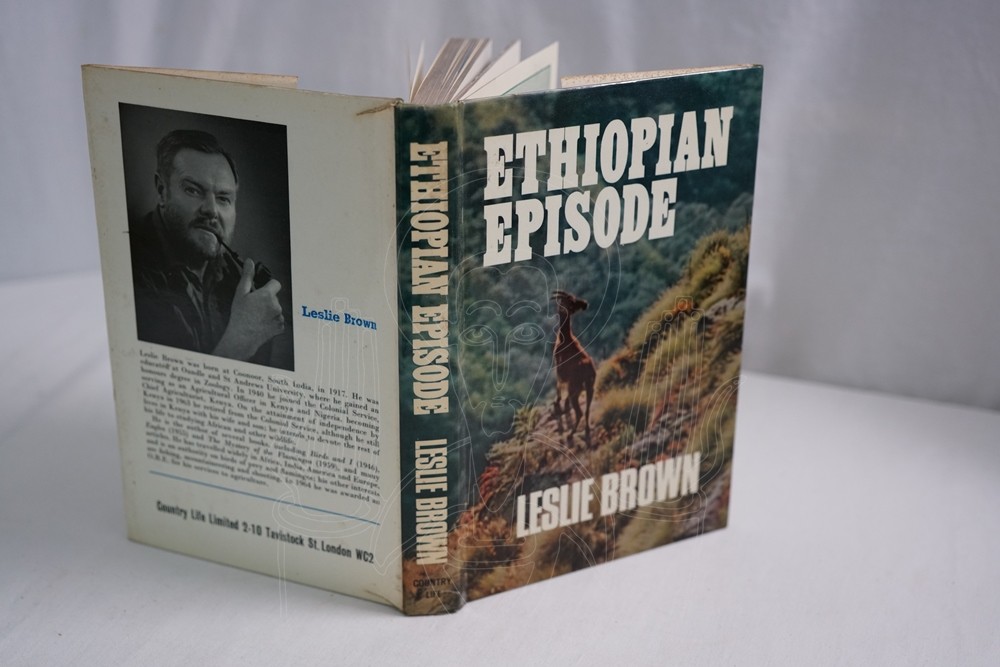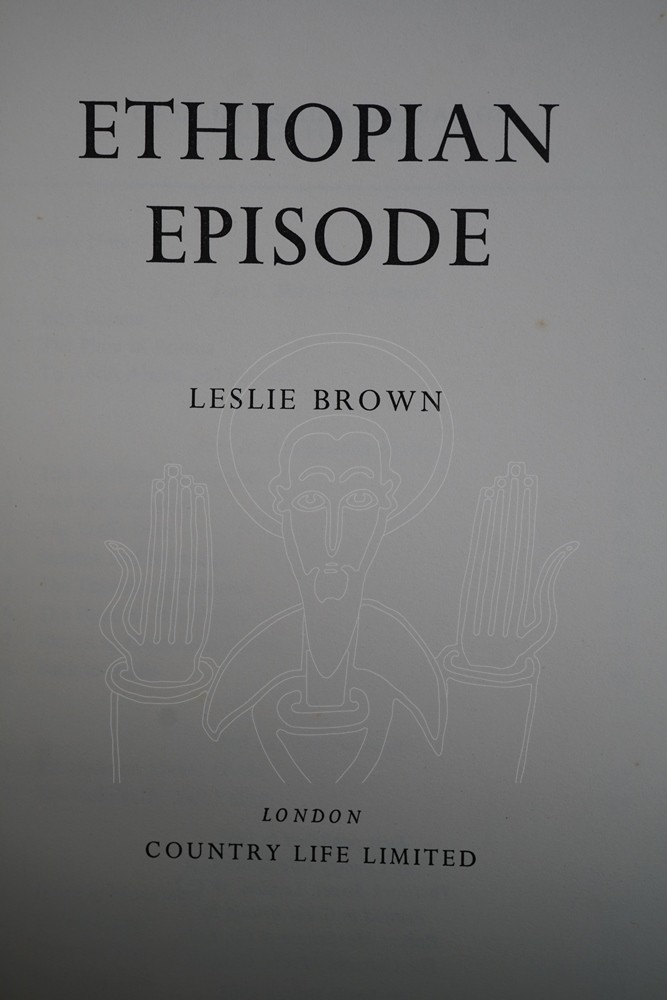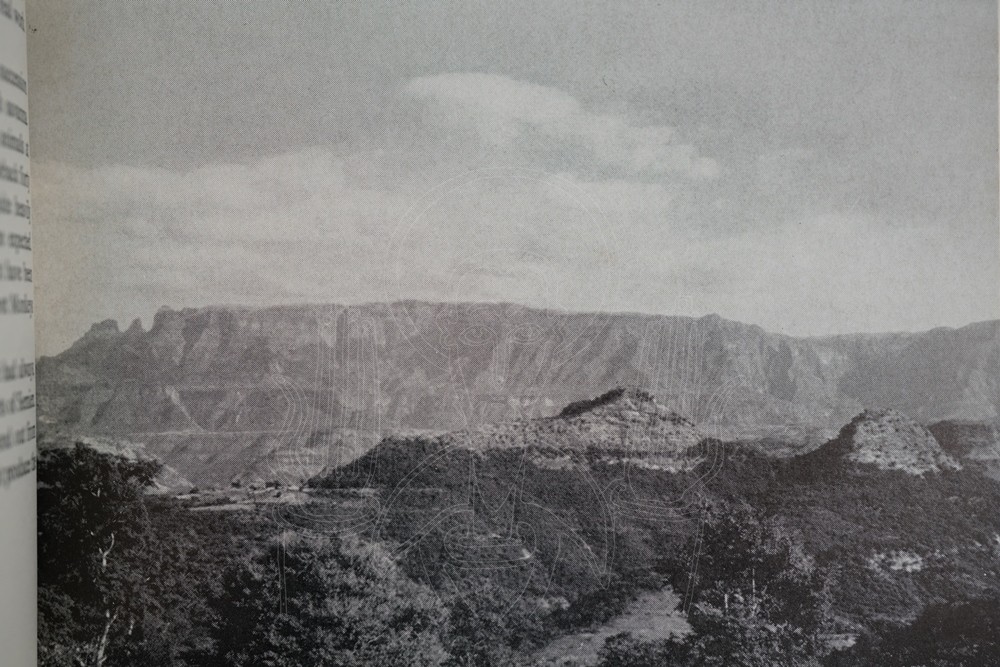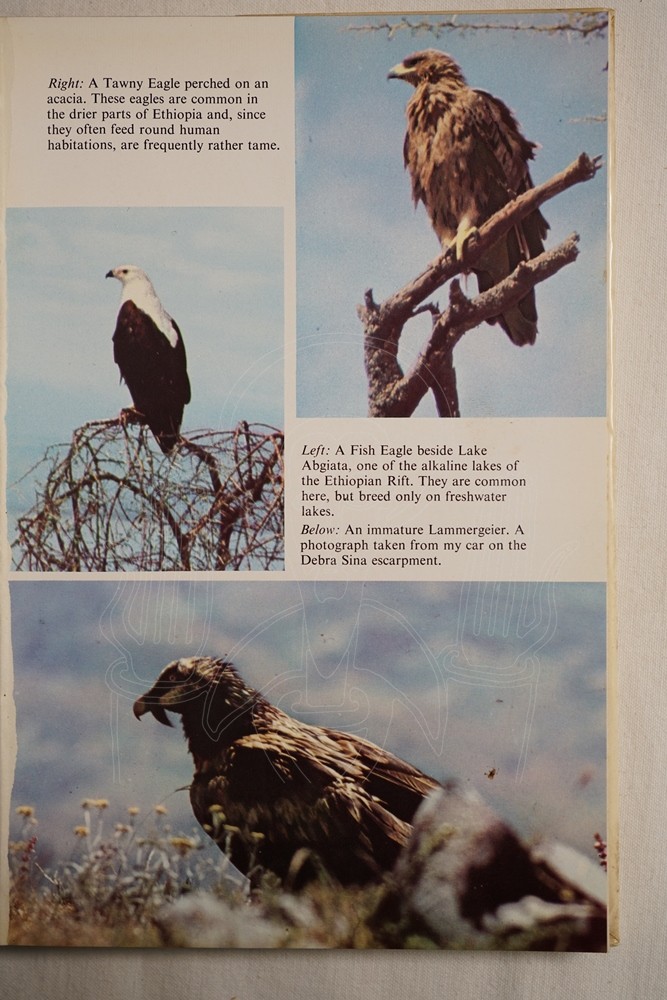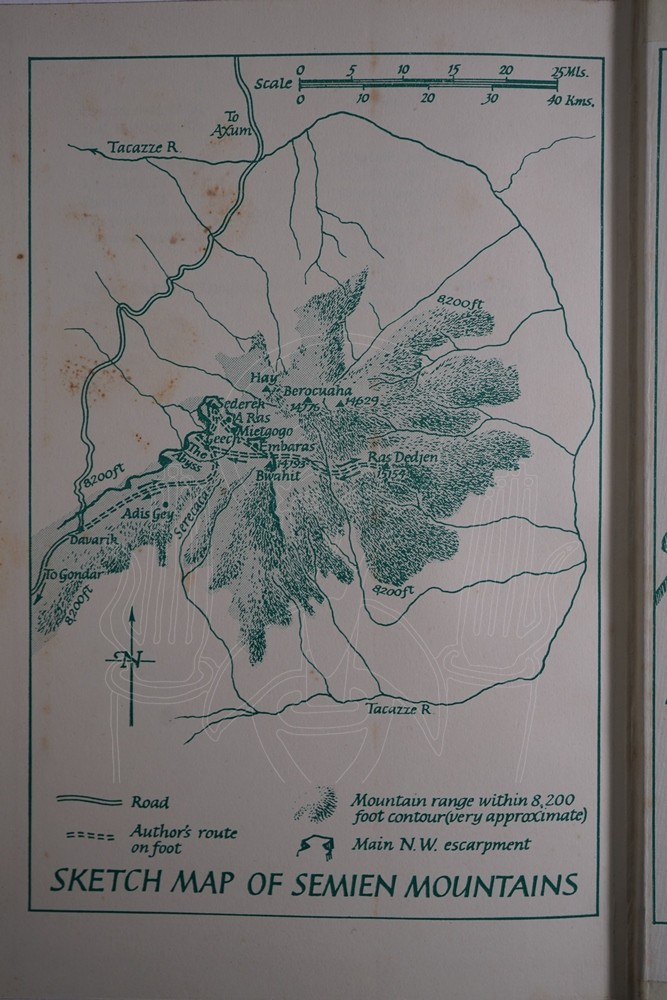Informations complémentaires
| Auteur | |
|---|---|
| Titre | |
| Éditeur | |
| Lieu d'édition | |
| Année d'édition | |
| Description | |
| État de l'article | |
| Langue | |
| Reliure | |
| Réf. Biblethiophile | |
| Réf. Pankhurst Partie | |
| Réf. Pankhurst Page | |
| Première entrée | |
| Sortie définitive |
| Auteur | |
|---|---|
| Titre | |
| Éditeur | |
| Lieu d'édition | |
| Année d'édition | |
| Description | |
| État de l'article | |
| Langue | |
| Reliure | |
| Réf. Biblethiophile | |
| Réf. Pankhurst Partie | |
| Réf. Pankhurst Page | |
| Première entrée | |
| Sortie définitive |
Leslie Brown, who has lived in Kenya for many years, went up to Ethiopia to study two animals, the Walia Ibex and the Mountain Nyala—both of which are unique to the country. This is the story of his expedition,” which was partly financed by the World Wildlife Fund. He isashrewdobserver,andhis descriptions of the country, and the people he met, are lively and often very amusing; the garrulous policeman, the squalor of the ‘men’s room’ at the hotel in Dodola, the slothful ‘Camera Willie’, and Wurgo, with his constant cries of ‘Yelle agazain* (‘There are no Nyala!’)— all are described in the most entertaining way, bringing home the hazards of travelling in this vast and varied country. Other, more conventional, obstacles were presented by terrain and climate, but these were surmounted and the expedition was successful in finding out a great deal about the animals in question. Although mainly concerned with these two animals, the author’s interest in wildlife in general caused him to investigate other creatures found en route, such as Lammergeiers, Gelada Baboons, the Semien Fox and many others. During his quest for the Mountain Nyala, he had as companion a young American, Bill Corcutt, an indefatigable walker to whom every mountain was a challenge.
Ethiopia is a country about which comparatively little has been written. Thus the book will be of interest to anyone concerned with the continent of Africa, in which Ethiopia is something of ananomaly,barelyhavingknown colonial rule. Ethiopia’s problems are those of many under-developed countries, but in particular the author draws attention to the alarming spread of land laid waste by soil erosion. This is caused by bad farming methods, which will, unless checked, lead to the destruction of much of the remaining virgin forest— the habitat of unique Ethiopian wildlife; it is the author’s hope that National Parks will be established before some species become extinct.
The book is well illustrated in colour and black-and-white and gives a most interesting picture of life and conditions in this exotic country where, once off the beaten track, you feel not so much in mediaeval times, but that you are witnessing the ways and customs of the Bible.
Leslie Brown was born at Coonoor, South India, in 1917. He was educated at Oundle and St Andrews University, where he gained an honours degree in Zoology. In 1940 he joined the Colonial Service, serving as an Agricultural Officer in Kenya and Nigeria, becoming Chief Agriculturist, Kenya. On the attainment of independence by Kenya in 1963 he retired from the Colonial Service, although he still lives in Kenya with his wife and son; he intends tto devote the rest of his life to studying African and other wildlife.
He is the author of several books, including Birds and I (1946), Eagles (1955) and The Mystery of the Flamingos (1959), and many articles. He has travelled widely in Africa, India, America and Europe, and is an authority on birds of prey and flamingos; his other interests are fishing, mountaineering and shooting. In 1964 he was awarded an O.B.E. for his services to agriculture.
Source: jaquette
